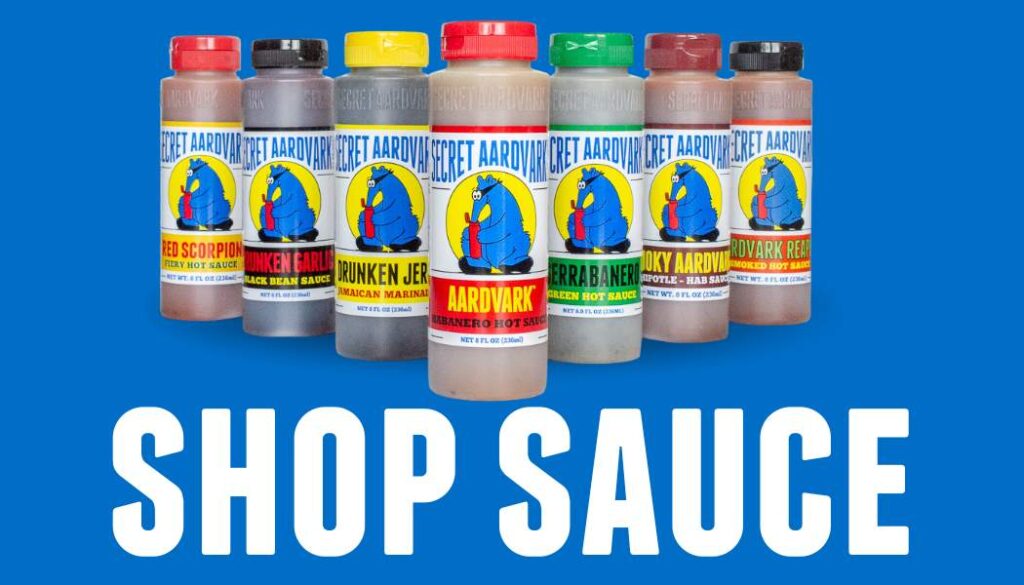
How to Get Hot Sauce Out of Clothes
Tonight, the bottle let you down. No, not that bottle, your hot sauce bottle! If you’re here, it’s because you were…some might call it clumsy. We’ll call it enthusiastic about hot sauce to a fault.
But that’s neither here nor there. Your favorite condiment is currently sitting on your pants, shirt, sock, or somewhere else it shouldn’t be, and you don’t want it to leave a stain.
And it will stain. Hot sauce consists of spices, vinegar, chili peppers, fruits, and vegetables. The tannins and oils from all those things stain clothes and carpets. It’s a sad fact, but knowledge is power when it comes to fighting stains.
Now for the good news. Unless your hot sauce has added artificial food coloring (and if it does, please do yourself a favor and stop buying that hot sauce), the stains are usually simple to remove.
First things first! Different fabrics have different care instructions. We’ll touch on that later, but if your shirt is dry-clean-only, silk, wool, or leather-trimmed, please read carefully as there are specific things to consider with those types of fabrics.
Step One: Get The Chunks Out
This doesn’t apply to every hot sauce or every spill, but it probably applies to your Secret Aardvark spill. We hope you love our tomatoes and carrots, but your shirt probably doesn’t. First, you’ll want to use a dull knife, spoon, edge of an old CD mix tape your ex made you in college (why do you still have that?), or something similar to lift the solids from the fabric.
Step Two: Cold Water
As soon as possible, run cold water over the back of the stain. You want to flush it out from the back, and you want it to be cold. Hot water causes stains to set, so be sure to feel the water before you start to flush the hot sauce stain. Let the water run for a few minutes over the back of the stain – it will pull out much of the stain on its own.
Step Three: Blot it Out
Next, you’ll want to start blotting out the stain. You’ll want to take and wet a white cloth, napkin, or slice of plain white bread, and blot the stain. Do not push down and rub vigorously. This will push the stain further into the fabric, can cause the stain to spread to more of the fabric, and can even damage the fibers of your clothes.
Oh, and we’re completely serious about the white bread. If you don’t have access to any light-colored fabric but do have some plain white bread laying around, it’s better to use that than dark napkins. This is because dark clothes can bleed into your fabric. White has the added benefit of allowing you to see the stain transfer from your clothes to the napkin (or, again, bread).
However, we don’t recommend eating the bread after. That’s kind of gross, sorry.
Step Four: Detergent, Not Soap
If you still have some stain left, you’re going to want to resort to detergent. Don’t scrub at your stain with bar soap, or really any kind of soap, which can set stains. What you want is a true, heavy-duty liquid detergent. Or a Tide stick. Man, those things are awesome.
But back to stains – rub your detergent into the stain, but again, don’t work it too hard. Just like before, aggressively working a stain can cause damage to the fabric and can even cause the stain to spread. Start on the outside of the stain and work your way in.
Alternate Stain Removers
If you’re not into heavy-duty detergents, you might find success by subbing it out for white vinegar. As anyone who’s ever had to clean an ink pen stain with hairspray knows, like chemicals are great for stain removal. And what’s in hot sauce? That’s right, vinegar. Instead of applying directly to the stain, dip your cloth (please ditch the bread at this point and find a napkin), directly into the vinegar, then rub from the outside of the stain, in. Note: vinegar can weaken or change the color of cotton, silk, rayon, and other fabrics, so please make sure your fabric won’t have a negative reaction the vinegar.
You might also be able to use cornstarch to remove the stain, as cornstarch is a boss when it comes to removing oils. Run the cornstarch directly into the stain, and let it sit for a half an hour or so. Then, brush off the cornstarch with a dry (white) cloth. Please note that you might have to repeat this one a few times, but it does work well on fabrics like wool and silk.
Speaking of oils and like substances, the oil in hot sauce might respond well to citrus oil products. Dab on the citrus oil, then lay a cloth over the stain, using a steam iron on top to pull up the stain. If you don’t have citrus oil, lemon juice with some salt laid out in the sun might do the trick (but could cause color fade).
Step Five: The Washing Machine (and Beyond)
Next is the true test: putting your stained clothes in the washing machine. We recommend a cold wash with light colors. Afterward, check to make sure the stain is gone before you put it in the drying (where any remaining stain will certainly set).
If there is still a stain, all is not lost. You can soak the clothes in an oxygen-based bleach (think OxiClean and the like) in tepid water and soak it overnight. However, you cannot use this method on silk, wool, or anything trimmed with leather.
Getting Hot Sauce Out of Dry Cleaning
If you have some dry-clean-only clothes, follow step one to remove any solids. After that, all you can do is take it to the dry cleaner and have them note the stain specifically. They are the experts, after all!
If you’re using an at-home dry cleaning kit, just make sure you pre-treat the stain with the stain remover that should be provided with the kit before you place it into the bag.




